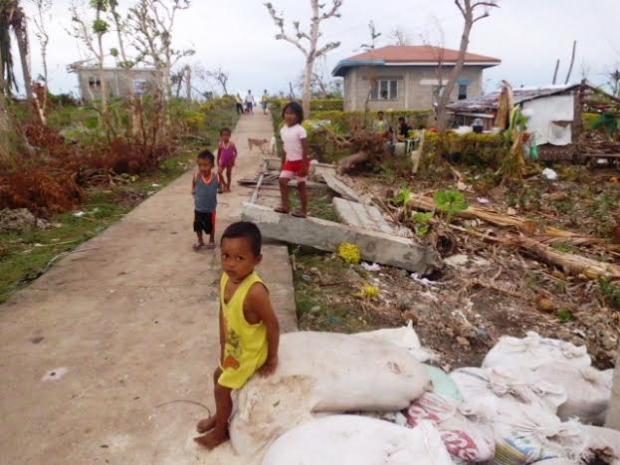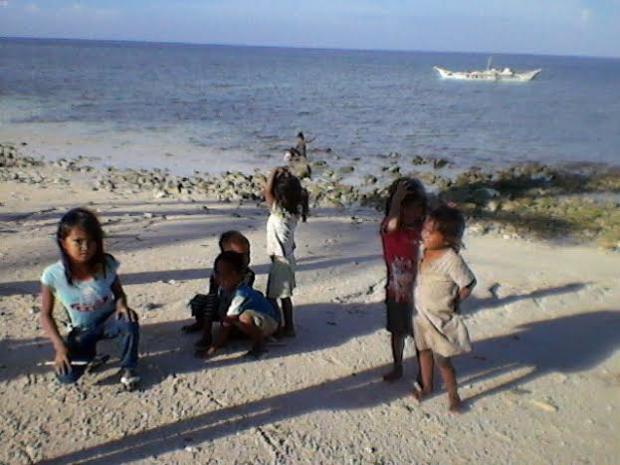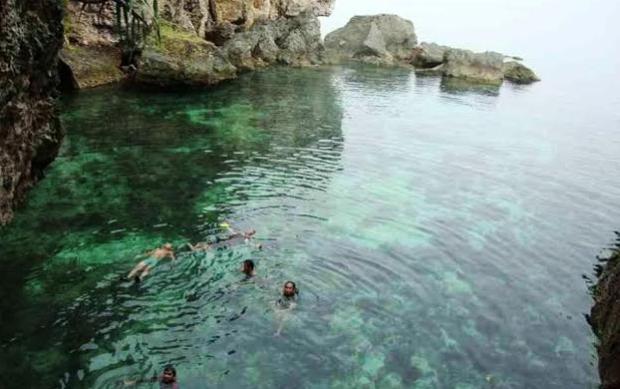by Gerald S. Ortiz, Contributor
Unfamiliar, unheard of and unknown to many. These words best describe Kinatarcan island before supertyphoon Yolanda.
Located off the coast of Daanbantayan town, northeast of mainland Cebu, the island is visible on Googlemaps and Wikimapia, but labeled Guintarcan, thus, the name Kinatarcan sounds new. In a way, I have to thank Yolanda. Because of the storm, I came to know this paradise existed.
Being right in Yolanda’s path, the island was one of the hardest hit when the Category 5 storm struck on Nov. 8, 2013. Although almost 100 percent of houses, school buildings and churches of different denominations were damaged by the powerful winds and 20-foot storm surge, nobody died. When I arrived in Kinatarcan a few days after the storm, I saw the devastation. The island was leveled. Only a few concrete houses were standing with no roof, doors or windows . Only the concrete shell remained.
In one school compound, the entire classroom was flattened as if smashed by a wrecking ball. I approached a local official on the street and asked him on the number of casualties the island had. To my surprise, he answered “none”. I asked our guide if that was true; he confirmed it.
It was hard to comprehend amid the grim devastation I saw. Where did the locals go during the superstorm? Why were all lives saved and very few injured?

Children play among the ruins caused by Yolanda in Kinatarcan Island days after the supertyphoon hit the island. (Contributed/ Tepaka)
Several factors were behind the islands excellent survival rate. Foremost was the local officials’ untiring effort in going around giving warnings to local residents before the storm hit. Second was the community’s reaction to the warning. They heeded the call to seek higher ground or to seek shelter in the concrete portion of their house, the comfort room.
Lola Tita Rosos, one of the original occupants of Kinatarcan, survived by hiding inside her toilet. Several families also sought refuge at the islands many interconnecting caves, most of them unexplored. Stories of people hiding in these limestone fissures when there was impending danger were common.
When American gunships pounded a fleet of Japanese warships in World War II, many vessels sunk off the coast of Kinatarcan Island. Local residents witnessed the battle from their hiding place in caves up in the hills.
The island is a potential eco-tourism destination. It is blessed with crystal clear waters, white sand public beaches, hidden coves, a year-round breeze and numerous caves.
Nature lovers and adventure seekers would easily marvel at its raw beauty. The island is officially classified as a wilderness. It’s better if the government maintains this status to prevent commercialization and to regulate activities.

Sparkling clear waters, and white sand public beaches make Kinatarcan Island a potential eco-tourism destination in Cebu. (CONTRIBUTED PHOTO/ TEPAKA)
Promoting eco-tourism and renewable energy are strongly suggested for the island’s sustainable development. Electricity only runs for four hours in the evening. Many families have not fully recovered yet from the catastrophe of Yolanda. There are no ports or wharfs, no market. The crop is mostly cassava. Potable water is scarce.
Living conditions will improve only if the national government would help the municipal government of Sta. Fe of Bantayan Island to which Kinatarcan belongs.
I attended a meeting with the town mayor and private individuals interested in the island’s development. We have a common vision but are hampered by the lack of funds. ‘Recently, rehabilitation czar Secretary Panfilo Lacson said he would look for a private institution to sponsor the rebuilding of Kinatarcan, which up to now has not received a single transitional shelter from the government. Maybe the good secretary can allot a small percentage of the hefty foreign aid coursed through the national government for the rehabilitation of Kinatarcan’s basic infrastructures. Then it would be easier to convince the private sector. While implementers are there, we need government resources to finance the basic infrastructure.
The private sector and the island community can engage in rehabilitation and sustainable activities if the basics are in place. It would be an ideal model for a Public-Private-Community Partnership, in order to introduce social enterprises that use sustainable methods.
It’s not hard to pitch the island. All we need is teamwork.
About the writer:
A construction contractor by profession, I started an NGO called TEPAKA Inc. which stands for TEknolohiya PAra sa Kalamboan after Yolanda. It’s a small organization founded by a few techie buffs from Talisay City.
After the storm, we distributed 21 containers of relief goods from LBC Foundation up north and to fire victims in various parts of Cebu.
I also created a Facebook page called Discovering Kinatarcan. I started helping the island a few days after Yolanda, distributing relief goods, helping in rebuilding houses, initiated coastal clean-ups and distributing fortified rice. We’ve made several sorties to the island.
Recently, we started fabricating a portable renewable source of energy like a wind turbine suitable for a single household. Once electricity is drawn, we will install a digital antenna to pick up a TV signal. Only one channel is available in Kinatarcan, and the signal is from Bacolod.
In April, TEPAKA announced online that it has entered into a joint venture to develop about two hectares of land for a resort hotel, spa and restaurant. Ninety percent of the employees will be local hires. The area has potential for watersports like scuba diving, surfing, kayak at the cove, and island hopping. Inland adventure could include caving, spelunking, rock climbing, road and trail biking, and outdoor survival camps.
We are looking for partners who are experts in these fields with proposals in line with the thrust of eco-tourism, environment protection and sustainable development.
Social entrepreneurs, who are interested to be partners, can email the group at tepakainc@gmail.com.
Disclaimer: The comments uploaded on this site do not necessarily represent or reflect the views of management and owner of Cebudailynews. We reserve the right to exclude comments that we deem to be inconsistent with our editorial standards.

